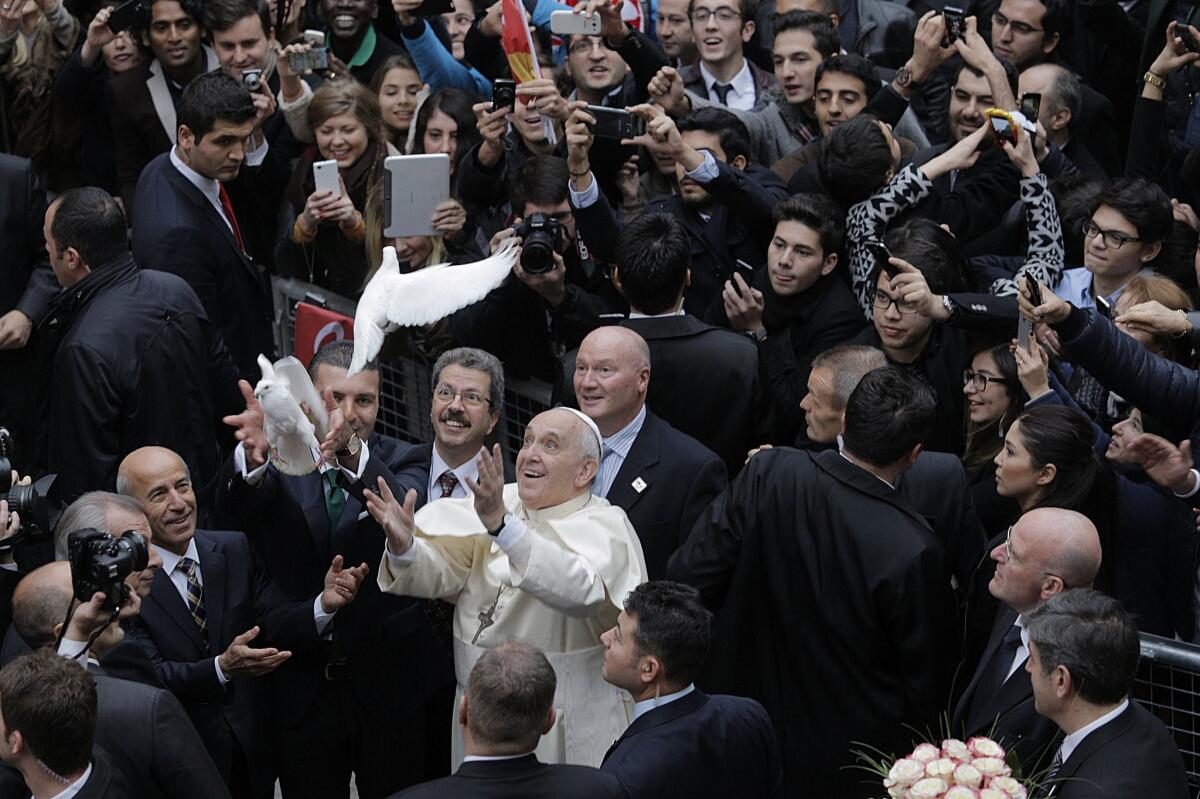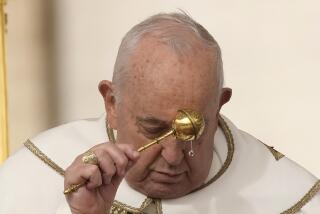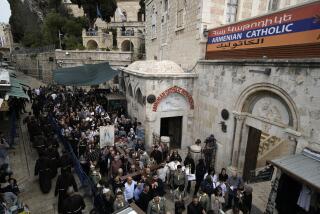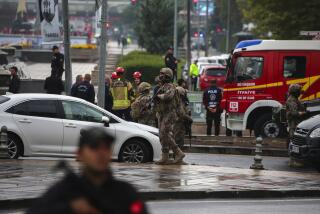Pope Francis’ visit to Turkey puts spotlight on region’s Christians

Reporting from Istanbul, Turkey — Dressed in a neatly pressed dark suit, Bedri Diril, 41, stood patiently Saturday among a crowd of hundreds in front of St. Esprit Cathedral in Istanbul awaiting the arrival of Pope Francis.
“We Christians do have problems here, but they are not brought up in public much,” Diril said, clutching a cherished invitation to Mass with the pontiff, one of only a few hundred such invites distributed among the city’s dwindling Christian communities. “Me and some of my friends, we no longer wear crosses, or we put them inside our shirts, [to hide] being Christian,” he said.
Francis arrived in Istanbul on Saturday on the second day of his three-day visit to this overwhelmingly Muslim nation. His agenda included meetings with fellow clerics, both Muslim and Christian, and visits to the city’s landmarks, including Sultan Ahmed (the Blue Mosque), and Hagia Sophia, the former Orthodox cathedral that was converted into a mosque and then into a museum, its status for most of the last century.
In Ankara on Friday, the pope cast a spotlight on the flight of religious minorities from Iraq and Syria, where Christians and others face persecution by Sunni Muslim extremists.
“Hundreds of thousands of persons have been forced to abandon their homes and countries in order to survive and remain faithful to their religious beliefs,” the pope said.
For many Christian Turks, the exodus reminds them of their own nation’s legacy of intolerance for Christians, a history that Turkish society has still not entirely accepted.
A century ago, Christians accounted for as much as 20% of the population of Turkey. Today, Christians and other non-Muslims make up less than 1% of all Turks.
An Assyrian Christian turned Roman Catholic, Diril moved to Istanbul with his family 22 years ago, a time when violence between the Turkish military and Kurdish rebels made life difficult in their village in eastern Turkey. Nationalist Turks antagonistic to the Kurds were also hostile to Assyrians, Diril said.
“Even though we were Turkish citizens, they called us foreigners,” he said.
Religious diversity was once much more a part of life in Turkey. A hundred years ago, in the waning days of the Ottoman Empire, Istanbul was home to large numbers of non-Muslims, including Greek and Armenian Christians and a sizable Jewish community. Today, about 120,000 Christians remain in the entire country.
Hundreds of thousands of Armenian Christians were deported in 1915-18, many violently, resulting in the deaths of as many as 1.5 million people, the first genocide of the 20th century. The Turkish government, successor to the Ottoman empire, rejects the term “genocide” and says the deaths of Armenians and others at the time were the result of war, displacement, disease and other factors.
After World War I, hundreds of thousands of Greek Orthodox Christians were forced out as part of a population exchange that saw Muslim Greeks sent to Turkey. Additional expulsions of Greek Orthodox Christians followed.
Decades later, many Christians say they still sense resentment.
“They hate us, they want to finish us off,” Simon Barsamian, a young Armenian said at the Armenian Patriarchal Church, one of only 34 functioning Armenian churches in Turkey.
The Armenian Patriarchate was established in 1461, eight years after Ottoman Turks overran Constantinople, now Istanbul.
“We don’t get much trouble from the Islamists,” Barsamian said. “Our problems are usually from nationalists.”
In the last decade, President Recep Tayyip Erdogan’s Justice and Development Party, or AKP, which has Islamist roots, has made a series of conciliatory overtures. Universities have held conferences to discuss the Armenian deaths, the centenary of which will be marked next year throughout the Armenian diaspora community.
The Turkish government has returned some property seized from minorities, introduced Christianity into theology classes in schools, and publicly acknowledged the events of 1915-18, while still denying a mass extermination of Armenians.
“We don’t know the AKP’s real intentions,” said Nejla Karabulut, one of a small number of Turkish Muslims hoping to catch a glimpse of the pope at St. Esprit Cathedral. “They use religion for politics.”
The reforms are inadequate, she says, attributing them to the ruling party’s desire to build support among minorities against a secular, often nationalist, opposition.
“There is still a very long way to go,” said Karin Karakasli, a former editor of Agos, a prominent Armenian-Turkish newspaper, pointing out that Turkey’s border with Armenia remains closed, and leading politicians still refer to Armenians as “traitors.”
In 2007, a Turkish nationalist gunned down the newspaper’s editor, Hrant Dink, after he highlighted the fate of Turkey’s Armenians. One person was convicted of the murder, but a wider investigation that appeared to implicate the military, police and politicians was abruptly halted.
(In 1981, Mehmet Ali Agca, a member of a Turkish ultra-nationalist organization known as the Gray Wolves, shot and wounded Pope John Paul II in St. Peter’s Square in Vatican City. The pontiff recuperated and later forgave Agca for the assassination attempt.)
Karakasli says many Turks are moving on in regard to the Armenian issue, even if their government remains reticent about the catastrophic events.
“Younger Turks have questioned the official history ... [for] more than a decade,” she said. “There are alternative sources for research; talking about the issue is no longer a taboo.”
Farooq is a special correspondent. Times staff writer Patrick J. McDonnell in Beirut contributed to this report.
Farooq is a special correspondent. Times staff writer Patrick J. McDonnell in Beirut contributed to this report.
Follow @mcdneville on Twitter for news out of the Middle East
More to Read
Sign up for Essential California
The most important California stories and recommendations in your inbox every morning.
You may occasionally receive promotional content from the Los Angeles Times.










